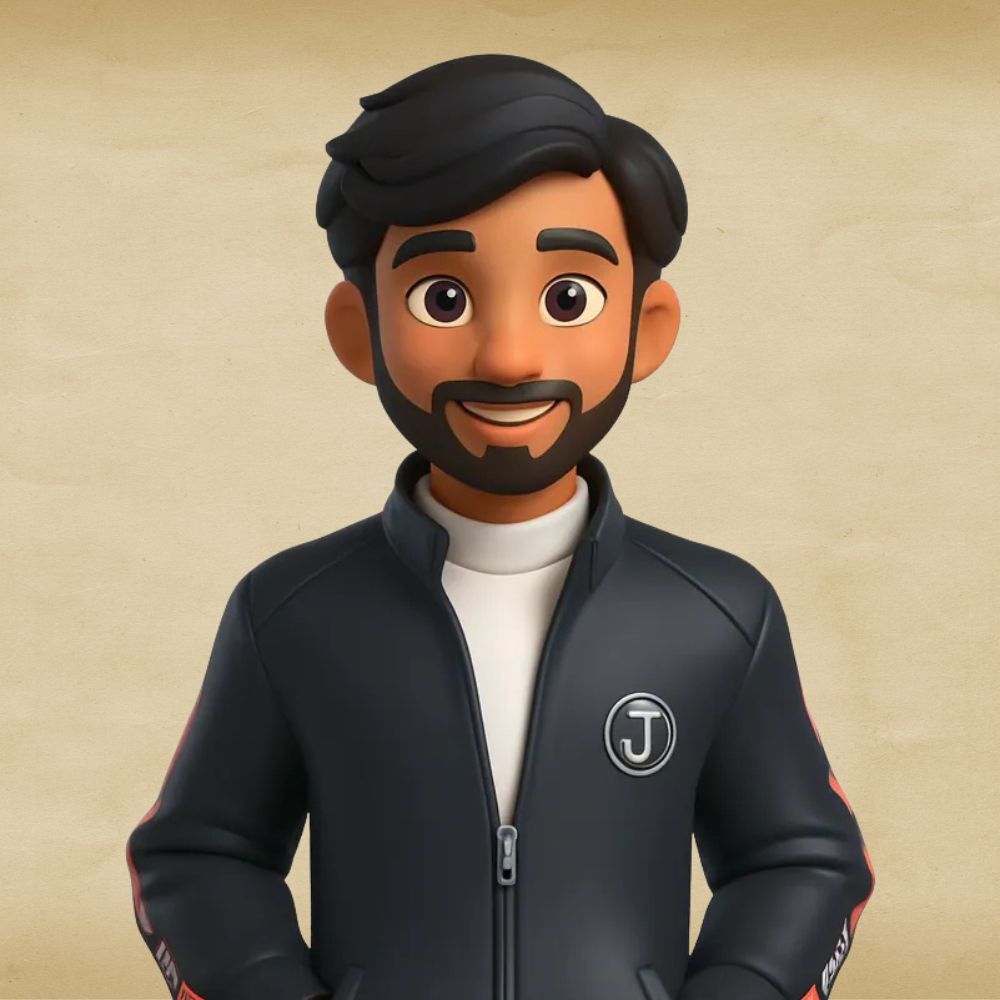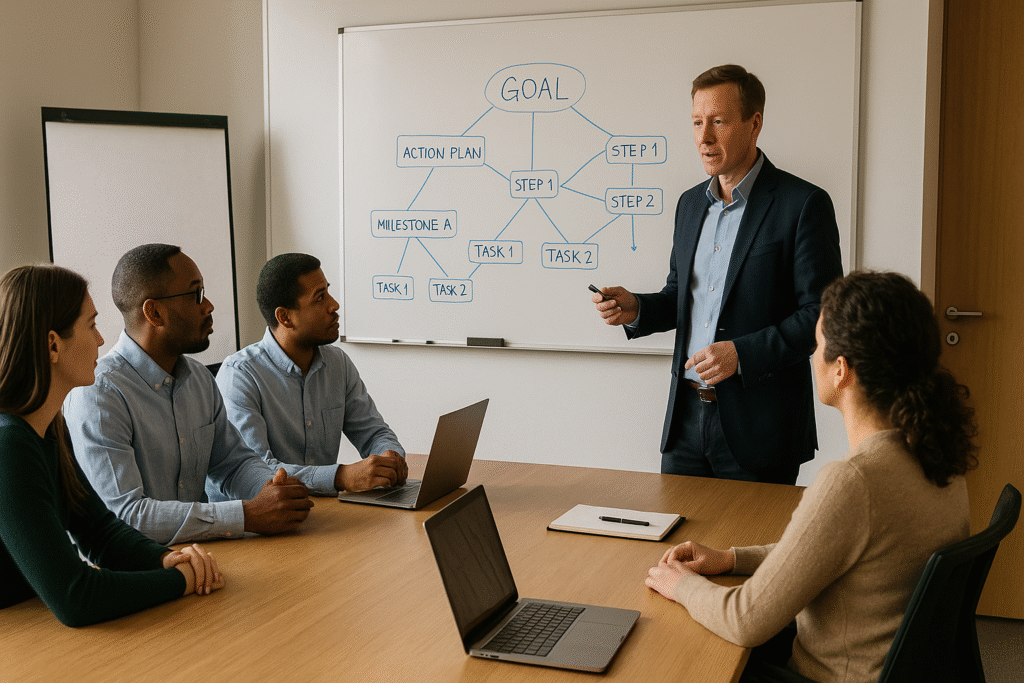Introduction to Back Casting Room
A back casting room is a space where people sit together to plan the future by starting from a goal and then thinking backward. It is used in strategic planning when a company or group wants to decide how to reach a big, long-term goal. This method is different from forecasting, where people look at current trends and try to guess what will happen next. Back casting does the opposite. It begins with a clear picture of the future and then works backward to find the steps needed to reach that future.
The back casting room helps people focus on the end goal first. In this room, teams can talk, share ideas, and explore many paths to success. This approach is useful for solving big problems or creating long-term change. It also helps teams avoid getting stuck in short-term thinking. The setup of a back casting room supports creativity. It gives space for writing ideas, drawing charts, and working as a group without distraction.
Many businesses and organizations now use this planning method because it gives a fresh way to think about the future. It pushes people to break free from limits and imagine what they really want. Then, it helps them figure out how to get there step by step. Compared to forecasting, which can limit thinking to what is likely or common, backcasting opens new paths and solutions. This is why the back casting room has become an important tool in strategy planning for the future.
Understanding Backcasting: The Core Concept
Backcasting is a planning method where you begin with the future in mind. You first decide what kind of future you want, then you look backward to find the steps needed to reach it. This is different from most planning styles where you start with your current situation and try to move forward. In backcasting, the goal comes first. Once you know the goal, you can build the path that leads to it.
The idea of backcasting has been around for many years. It was first used in environmental planning to help leaders plan better ways to protect nature. Over time, other fields also started using this method. Now, it is common in business, urban planning, education, and health care. People use it when they need to solve big problems or plan for long-term changes.
There are some simple steps in the backcasting process. First, you set a clear goal for the future. It could be 10, 20, or even 30 years ahead. Then you ask, “What needs to happen before that goal becomes real?” You move backward, step by step, until you reach today. This process shows the actions you need to take now and in the future. It also helps you spot any problems or blocks before they happen.
In a back casting room, this whole process becomes easier. People use the space to share ideas, write down steps, and build a clear plan. Everyone works together to find the best way to move toward the future. The method is simple, but the impact is big. It helps teams think clearly, plan smart, and act with purpose.
The Role of a Back Casting Room in Strategic Planning
A back casting room plays a very helpful role in strategic planning. It gives teams a special space to think about big goals and how to reach them. When people have a quiet, focused place to work together, they can plan better. Everyone can sit in one room, share ideas, and build a plan that moves from the future back to today. This kind of teamwork becomes stronger in a space made just for this purpose.
The environment of the back casting room also matters a lot. It should feel open and creative. Bright lights, whiteboards, and large walls for writing or sticking notes help the team express ideas clearly. When the room is well-designed, people feel free to think in new ways. It becomes easier to break old habits and imagine different futures. A peaceful and inspiring setup helps people think deeper and look ahead with fresh eyes.
Many back casting rooms also include modern tools to help planning. Digital screens, smart boards, projectors, and planning software all make the work smoother. These tools help teams save ideas, build visual maps, and track every step. Technology adds speed and accuracy to the planning process. Whether it’s drawing a timeline or mapping out future problems, the right tools make a big difference.
With the help of a back casting room, teams do not just talk — they create real, smart plans. The room supports focus, creativity, and clear thinking. That’s why many businesses and planners use these rooms when they want to build strong, future-ready strategies.
Designing an Effective Back Casting Room
Designing an effective back casting room needs proper planning. The space should support thinking, talking, and teamwork. Some basic things matter a lot — like layout, lighting, sound, and furniture. The layout should be open so people can move freely. Tables and chairs should be easy to shift, so the team can work in groups or as one big team. Lighting should be soft but bright enough to keep people awake and focused. Natural light is best when possible. Good sound control is also important. If the room is too noisy or echoey, it can break focus during important discussions.
The back casting room must also have the right tools. Whiteboards are very helpful for drawing timelines or writing steps. Sticky notes, markers, and big wall charts make it easy to share ideas. A projector or large screen can show plans to the whole team at once. Digital tools like shared boards or planning software help save everything for later use. These tools make the work smooth and allow people to look at the same ideas together.
Flexibility is another key part of the room. Sometimes a small group needs to meet quietly. Other times a large team comes together. That’s why furniture should move easily and spaces should be adjustable. Foldable tables, rolling chairs, and movable dividers help shape the room for any kind of activity. When the space is easy to change, it works better for every type of planning session.
A good back casting room is not fancy — it is smart. It helps people think clearly, share freely, and plan better. With the right setup, this room becomes a powerful tool for building a strong future.
Applications of Back Casting Rooms Across Industries
A back casting room is useful in many industries. It helps teams in different fields plan for the future with a clear goal. In urban planning, it is used to imagine better cities. Planners sit together in the room and think about clean transport, green parks, or safer streets. Then they plan backward to find the steps needed to make that future real. This method helps create smart, people-friendly cities.
In environmental work, the back casting room helps teams plan ways to reduce pollution or fight climate change. They imagine a world with clean air and less waste, then plan how to reach that future. Groups working on water saving, forest care, or energy use also use this method. It helps them build strong and realistic plans for long-term change.
In business, companies use the back casting room to plan future growth. Leaders gather to imagine where the company should be in 10 or 20 years. Then they plan each step backward — from new products to team building or market changes. This helps avoid random actions and builds clear focus.
Many groups have used this method with great success. Some city teams used it to plan safer roads. Some green groups used it to set clean energy goals. Some companies used it to grow without losing their values. In all these places, the back casting room gave space for deep thinking and clear planning.
The main benefit of using this room is better results. It brings people together, builds strong plans, and makes the future feel possible. It helps teams avoid short-term thinking and focus on real, long-term success.
Benefits of Utilizing a Back Casting Room
Using a back casting room gives many strong benefits to any team or organization. One big benefit is that it brings clarity to goal setting. When people sit in the same room and focus on the future, they can clearly agree on what they want to achieve. There is less confusion and more focus. Everyone understands the goal and the reason behind it. This makes the next steps easier to plan and follow.
Another benefit is stronger teamwork. The back casting room creates a space where people can talk freely, share ideas, and build trust. It helps team members and even outside partners or clients feel involved in the planning process. This kind of teamwork builds better plans and brings more people on board to support the goal.
This room also helps the team see problems before they happen. Because the planning starts from the future and moves backward, it’s easier to spot any challenge that could slow things down. Teams can think about risks early and create smart ways to avoid or solve them. This proactive thinking saves time, money, and effort.
The back casting room is more than just a meeting space. It is a tool that makes planning clearer, teamwork stronger, and results better. That’s why more and more groups are using this method to build a future that works.
Challenges and Considerations
Even though a back casting room is very helpful, there are some challenges that teams may face. One common problem is setting up the space. It takes time, money, and effort to design a room that works well. You need the right tools, enough space, and a quiet area where people can focus. Some teams may not have the budget or space to build the room the right way. Keeping the room well-maintained is also important. If it becomes messy or outdated, it may stop being useful.
Another challenge is getting people to accept the idea. Some team members may not like changing the way they plan. They may feel more comfortable using old methods like regular meetings or basic forecasting. It can be hard to bring new ideas to teams that are used to doing things one way. That’s why it helps to explain the value of the back casting room with clear examples and small wins. Starting with a short session or a small project can help build trust and interest.
One more thing to think about is making sure all voices are heard. A good planning session should include different people with different views. If only one group leads the talk, the plan may miss key ideas. The back casting room should feel open and safe for everyone to share thoughts. Including people from different roles, backgrounds, and skills makes the plan stronger and more useful.
The back casting room is powerful, but it works best when it is set up with care, supported by leadership, and open to all. Handling these challenges well helps teams get full value from the space.
Case Studies: Real-World Examples
Many organizations have used a back casting room with great success. These real stories show how this planning method works in different fields and what can be learned from it.
One example is a city planning team in Europe. They wanted to make the city cleaner and safer by the year 2040. Inside their back casting room, planners, engineers, and local leaders worked together. They wrote future goals on large boards — like less car traffic, more bike lanes, and cleaner air. Then they planned backward from 2040 to the present day. This helped them create steps that were clear and possible. After a few years, the city saw real results, including new bike paths and a drop in air pollution.
Another case is a global company in the energy sector. They wanted to reduce their carbon footprint over the next 25 years. The company built a back casting room where teams from different countries could meet. They used screens, planning tools, and future maps to set big goals and break them down into small steps. Because the room supported long sessions and idea sharing, the company was able to build a strong and realistic plan. Today, they report steady progress and growing support from staff and customers.
One more example comes from a health organization that wanted to improve care for older people. Using a back casting room, they brought doctors, nurses, families, and designers together. They imagined what good elderly care would look like in 20 years. Then they built steps backward, finding new ways to train staff and improve patient spaces. Many of their changes are now in place and making a real difference.
Future Trends in Back Casting Room Utilization
The back casting room is changing with new technology and ways of working. These changes make planning for the future even better.
New tools like smart boards, virtual reality, and digital planning software help teams see their ideas clearly. These tools make it easier to imagine the future and find steps to reach it. For example, teams can use virtual maps to plan city layouts or use software to test different ideas quickly.
Many people now work from home or split their time between home and office. The back casting room adapts to this by using online tools. Teams can meet through video calls, share digital whiteboards, and work on plans together, even if they are in different places. This keeps everyone connected and allows more people to join the planning process.
Looking ahead, the back casting room will continue to grow. It will use more advanced technology to help teams plan better. It will also become more flexible, allowing people from different locations to work together easily. This means more ideas, better plans, and a stronger path to the future.
Conclusion
A back casting room is a powerful tool for planning the future. It helps teams set clear goals and find the best steps to reach them. By starting with the desired outcome and working backward, teams can create strong plans that guide their actions today.
Using a back casting room brings many benefits. It improves teamwork, encourages creative thinking, and helps identify challenges before they arise. This approach leads to better decisions and more effective strategies.
Integrating backcasting into your organization’s culture can lead to lasting success. It encourages everyone to think about the long-term vision and work together to achieve it. By adopting this method, your team can stay focused and adaptable in a changing world.
Consider setting up a back casting room in your organization. It can be a dedicated space or a virtual environment where your team can collaborate and plan for the future. Embracing backcasting can help your organization move forward with confidence and purpose.

Hi, I’m Bilal, the founder of outofmagazine.com. I love sharing fresh ideas, stories, and helpful insights on all kinds of topics that spark curiosity. My goal with this site is simple—to create a space where readers can find inspiration, useful tips, and engaging reads on lifestyle, trends, and everything in between.



